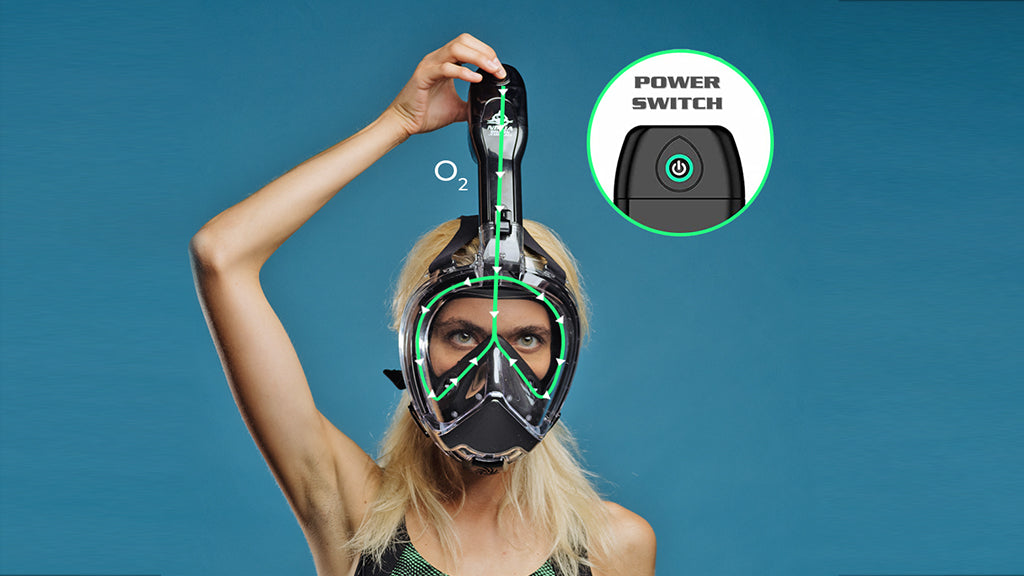The largest drawback with full face snorkel masks is you have a big air bubble strapped to your face which, unlike a conventional snorkel, you have no mouthpiece to spit out if you find yourself in any sort of breathing trouble. To achieve a reliable seal on your face these gadgets have a multi-strap system to anchor the mask firmly on your head that makes it much harder to rip the mask off in an emergency. The pool of air inside these full face masks is subject to turbulence when you breathe in and out and the large interior volume acts as a big mixing chamber for incoming and exhaust air. This can eventually create a carbon dioxide build-up as some exhaled air always stays in the mask as the air outlet is too small to allow a complete air exchange within the spacious interior of the mask body.
The modern full face masks are multi-component due to the elaborate shapes that can be created using injection mouldings which would not have been possible in earlier times and have the added advantage of being relatively lightweight while offering a wider transparency with their extremely large lenses. This wide open bay window feeling is probably the reason for the popularity of these masks, plus they have a space-age appearance that is very similar to what one sees in science fiction movies, particularly with the curved “bubble” lens early versions of these masks before concerns about image distortion underwater prompted the move to flat section lenses.
In order to overcome the mixing of incoming air and exhaust air mentioned earlier these masks resorted to an oro-nasal section separate to the observation section that it sits inside. The idea was that air drawn in through the top mounted snorkel would flow into the observation section and then pass through one-way mushroom valves into the oro-nasal section, but exhaled air could not pass back through the mushroom valves into the observation section going the other way. Instead it could flow out through another mushroom valve at the base of the mask into the water (which also served as a drain or water dump valve) or via another flow path built into the mask’s outer frame and moving up and out on either side of the mask. However not all these masks have this separate outlet ducting and in any case the separation of airflows does not occur in practice due to leaks and poor sealing on the face and in the silicone plastic mushroom valves. Anything selling for as low as 30 dollars is not going to be a precision instrument and in many cases these masks are slapped together as fast as possible by workers trying to churn out so many per shift.
The problem with all these elaborate looking masks is the bore sizes of the air ducting pipes or channels are too small, they are generally much smaller than the snorkel bores used in snorkel masks that only covered the eyes and nose in the rubber body dive mask era and they are not of a constant diameter. With the latter you could always poke you head out of the water and breathe through your mouth, but no such option exists with these modern day full face snorkel masks.
Unfortunately unlike the air flow path arrows illustrating how these masks are meant to work in their adverts the airflow achieved is not the discrete stream flows that these diagrams would suggest. Instead air swirls around passing through any available gaps and cracks and in many cases the user is trying to breathe through what is not much larger than a jumbo sized drinking straw. Under any stress the air delivered is going to be insufficient to meet the user's demands.
The user is restricted to head up positioning as the snorkel valves are meant to cope with the odd wave or dip of the head, not a submergence of any duration, plus they are just too buoyant for that type of service, provided they have not filled up with water! By way of comparison a conventional mask and snorkel allows the user to adopt any orientation underwater, including turning somersaults if so inclined, whereas full face snorkel masks require a definite up and down.




